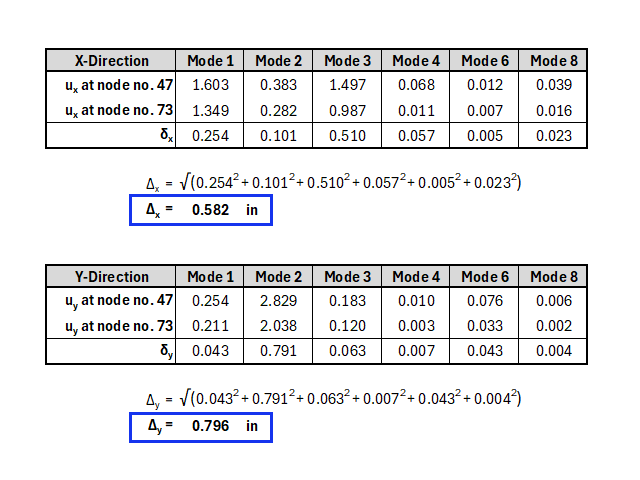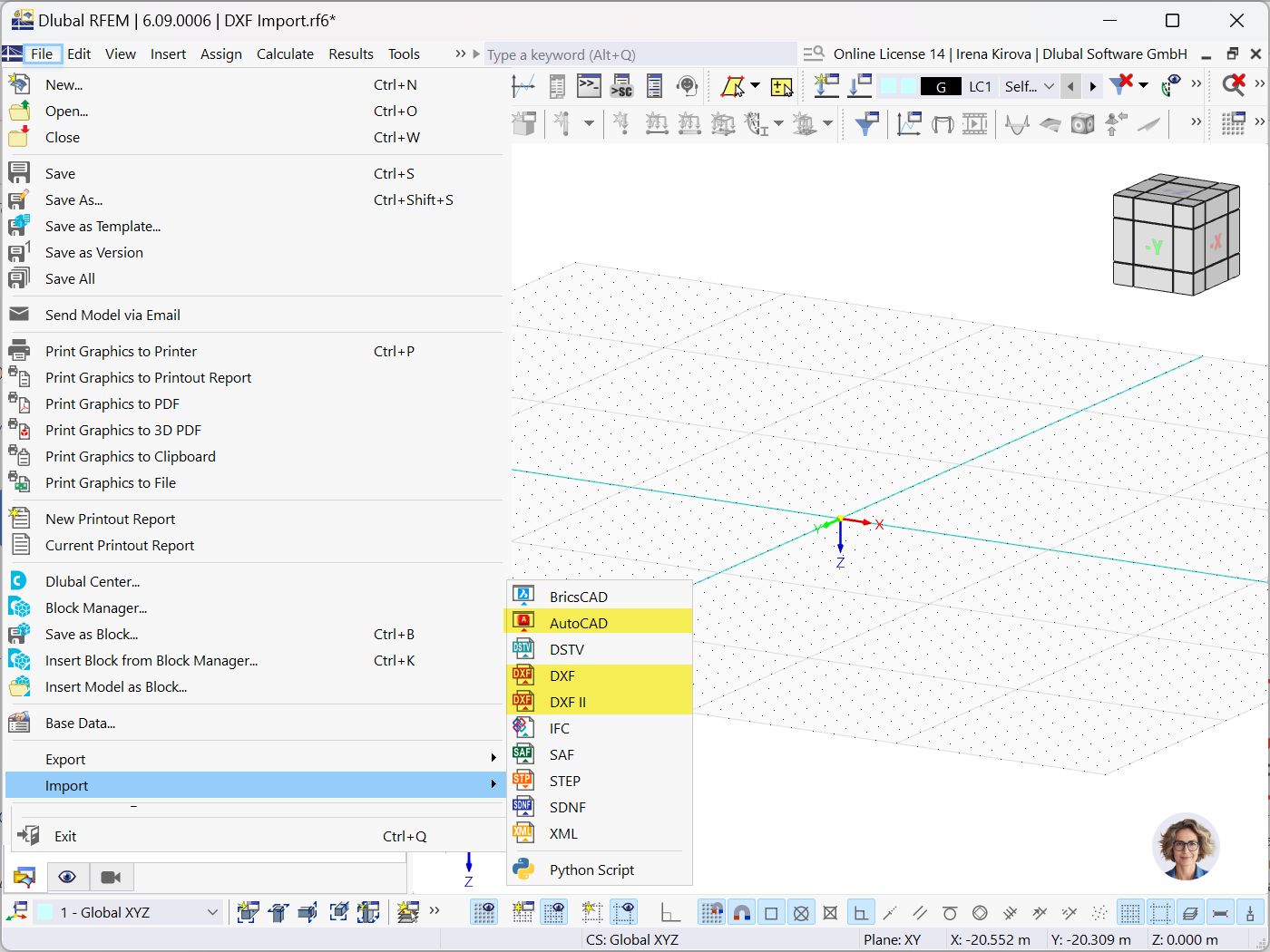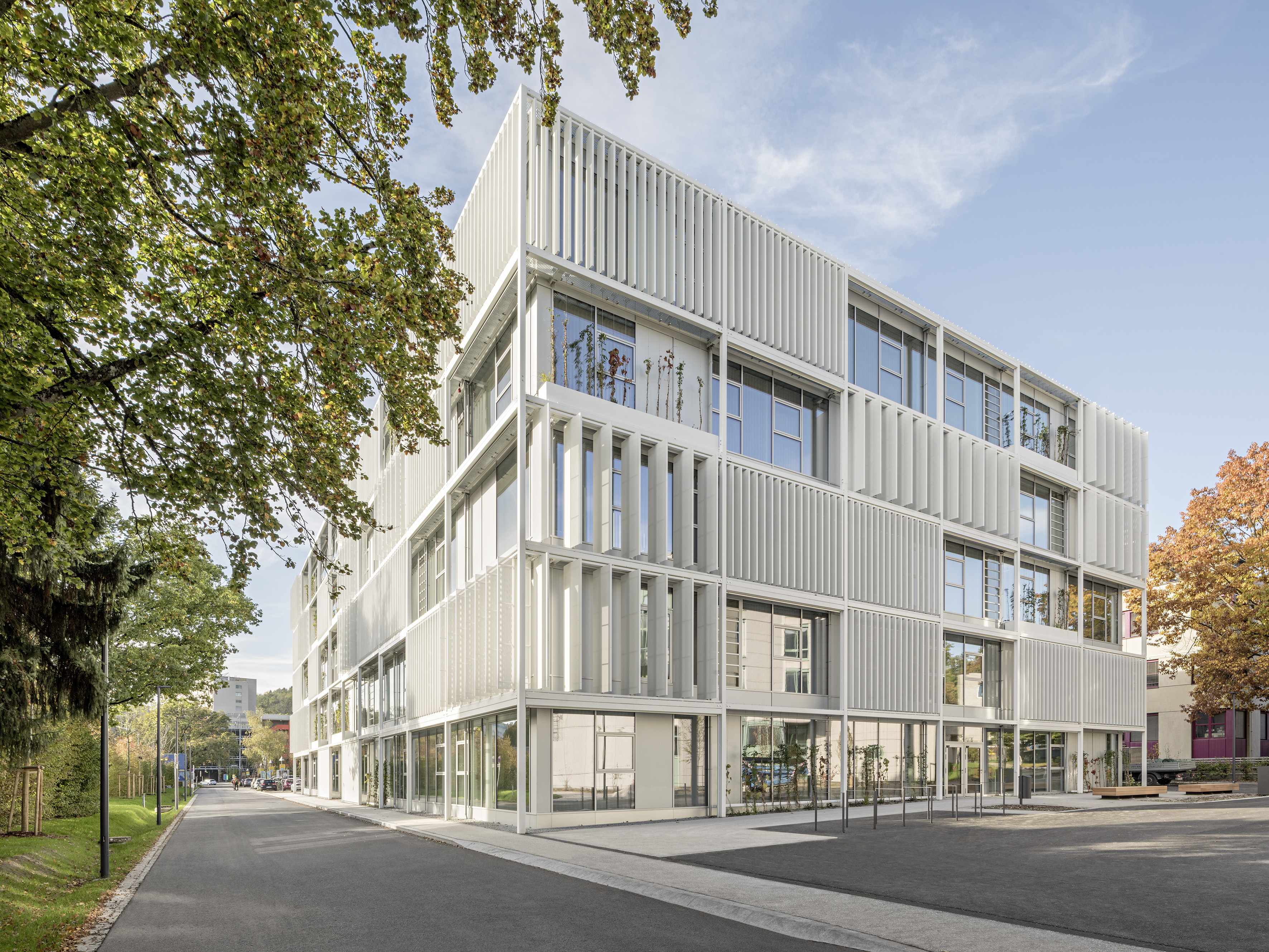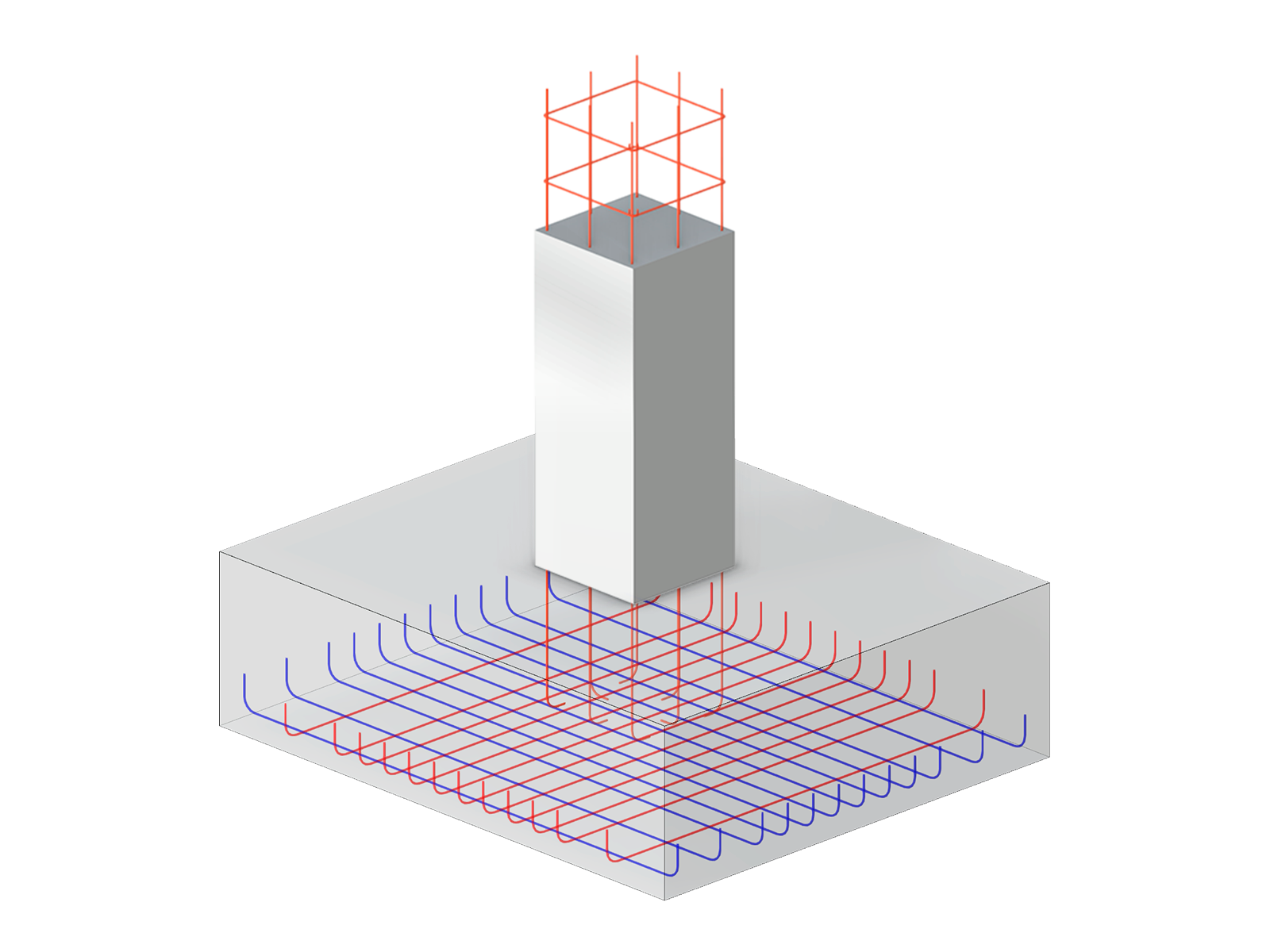Subject:
Assessment of Story Drift under Seismic Loads According to ASCE 7-22 and the Building Model
Comment:
The evaluation of story drift in a building is crucial to ensure acceptable structural performance by limiting the drift amount. Excessive drift has the potential to induce system instability and may cause damage to nonstructural components such as partitions. This article outlines the procedure for establishing interstory drift according to ASCE 7-22 and the Building Model add-on in RFEM 6.
Description:
Drift Determination According to ASCE 7-22
According to ASCE 7, the Design Story Drift Δ, is computed as the difference of the Design Earthquake Displacements δ-DE, per section 12.8.6.3. Diaphragm deformation δ-di may be neglected in determining the design story drift per section 12.8.6.5.
|
δx |
Gesamtverschiebung eines Stockwerks [in (mm)] |
|
Cd |
Vergrößerungsfaktor der Auslenkung nach Tabelle 12.2-1 |
|
δxe |
Auslenkung an der geforderten Stelle, durch eine elastische Analyse ermittelt [in (mm)] |
|
Ie |
Bedeutungsbeiwert, definiert in Abschnitt 11.5.1 |
Load Combination for Drift Analysis
Per section 12.8.6.1, the elastic analysis for computing drift shall be based on 1.0Eh combined with the expected gravity loads. Gravity load is included to maintain consistency between the forces used in the drift analysis and those used for stability verification (P – Δ) [ASCE 7 Commentary C12.8.6]. The load combination 1.0Eh + 1.0D + 0.5L is applicable for live load that is less than or equal to 100 psf (exception 1, section 2.3.1).
Location of Drift Evaluation (ASCE 7 Section 12.8.6.5)
1) When the centers of mass (CoM) are aligned, the story drift is computed based on the center of mass displacements.
2) When the CoM are not aligned (eccentricity between the CoM of two adjacent floors is more than 5% of the width of the diaphragm), the drift computed at the lower story is based on the vertical projection of the CoM of the upper story (Commentary C12.8.6).
3) For structures assigned to Seismic Design Category C, D, E, or F that are torsionally irregular, the drift is computed along the edges of the structure with two vertically aligned points.
Modal Analysis & Response Spectrum Analysis Add-ons
To gain insight into this topic, a three-story concrete building with an L-shaped ground plan is used as an example (Image 01). First, the modal analysis is performed to obtain the natural frequencies and mode shapes of the structure.
Afterwards, the response spectrum analysis (RSA) is used to generate the response spectrum according to the ASCE 7-22 standard. It is possible to include the displacement-related parameters, C-d and I-e when creating the response spectrum and to consider them in the story drift calculation. In this example, C-d = 1.5 and I-e = 1.0 are used (Image 02).
With the Building Model add-on, the mass center locations are provided for each story after solving for the spectral analysis. From the ‘Center of Mass and Rigidity’ table, it can be seen that the CoM are not aligned between the adjacent floors (Image 03).
To evaluate the story drift, it is necessary first to create the CoM for each story as a node. Node 47 is added at the top floor at Z = 40.0 ft. Since the drift computed at the lower story is based on the vertical projection of the CoM of the upper story, a copy of the node is added at Z = 30.0 ft, creating node 73. This procedure can then be continued for the lower floors.
When calculating story drift, a critical consideration arises: the difference of the displacements must not be determined from the results already superimposed by square addition, but may be superimposed only after the difference is determined. Therefore, the following formula is applicable:
Due to this condition, envelope displacements from “X” cannot be directly utilized for evaluation. Instead, story drift must be assessed individually for each mode shape in each direction, and then manually superimposed.
By displaying the displacement u-x at the centers of mass of each floor, the story drift can be derived from the differences between superimposed points (Image 04).
Mode shapes with minimal mass participation (e.g., mode 5 and 7 in this instance) can be excluded from calculations through the "Selection of Modes" tab under the RSA load case.
The relevant mode shapes and their displacements are listed in the tables below (Image 05).
This procedure has to be carried out for each story. This way, the maximum story drift for the entire building can be determined. For simplicity, the inclusion of gravity loads is not shown.
Drift Calculation According to the Building Model Add-on
The Building Model add-on can be useful to establish the drift of the structure. However, the methodology for calculating drift does not follow the ASCE 7 approach as described above.
In the Building Model, the location of the floor displacement reported in the ‘Interstory Drifts’ table (Image 06) is not necessarily based on one specific point (i.e., c...





































.png?mw=350&hash=d538a044ed58714e93ef2f2fb0fe731b25e855ee)























-querkraft-hertha-hurnaus.jpg?mw=350&hash=3306957537863c7a7dc17160e2ced5806b35a7fb)













.png?mw=600&hash=49b6a289915d28aa461360f7308b092631b1446e)




